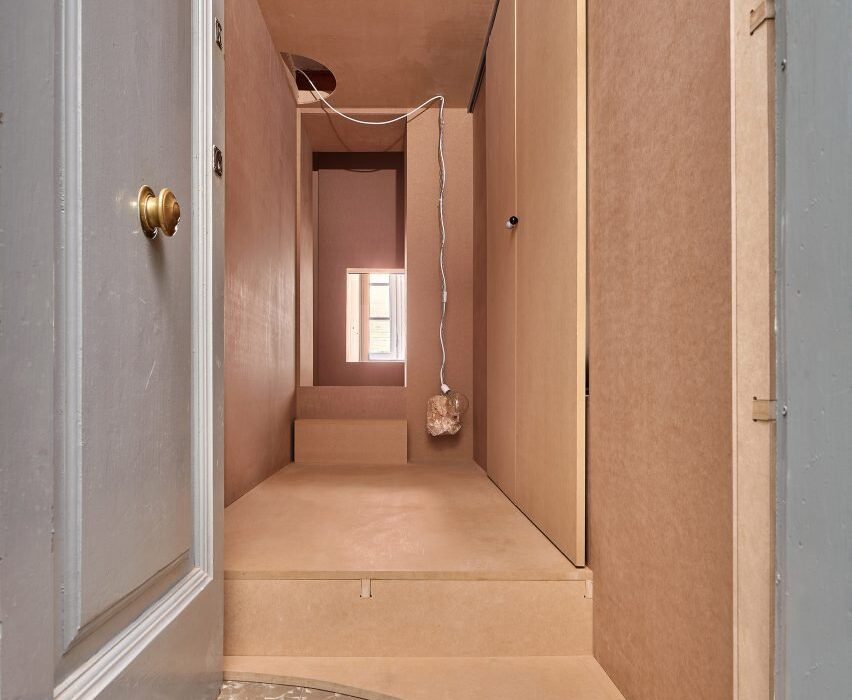Spanish studio Takk took cues from snugly stacked Russian dolls for the interior renovation of this Barcelona apartment, which features rooms nestled inside each other to maximise insulation.
Called 10K House, the 50-square-metre apartment was renovated by Takk using a material budget of only 10,000 euros with the aim of updating the home to be as sustainable as possible.

The project was informed by concerns about climate change as well as the global energy crisis faced by homeowners and renters.
Arranged across one open level, rooms were built “inside one another” in a formation that mimics the layers of an onion and places the rooms that require the most heat at the centre of the apartment, according to Takk.
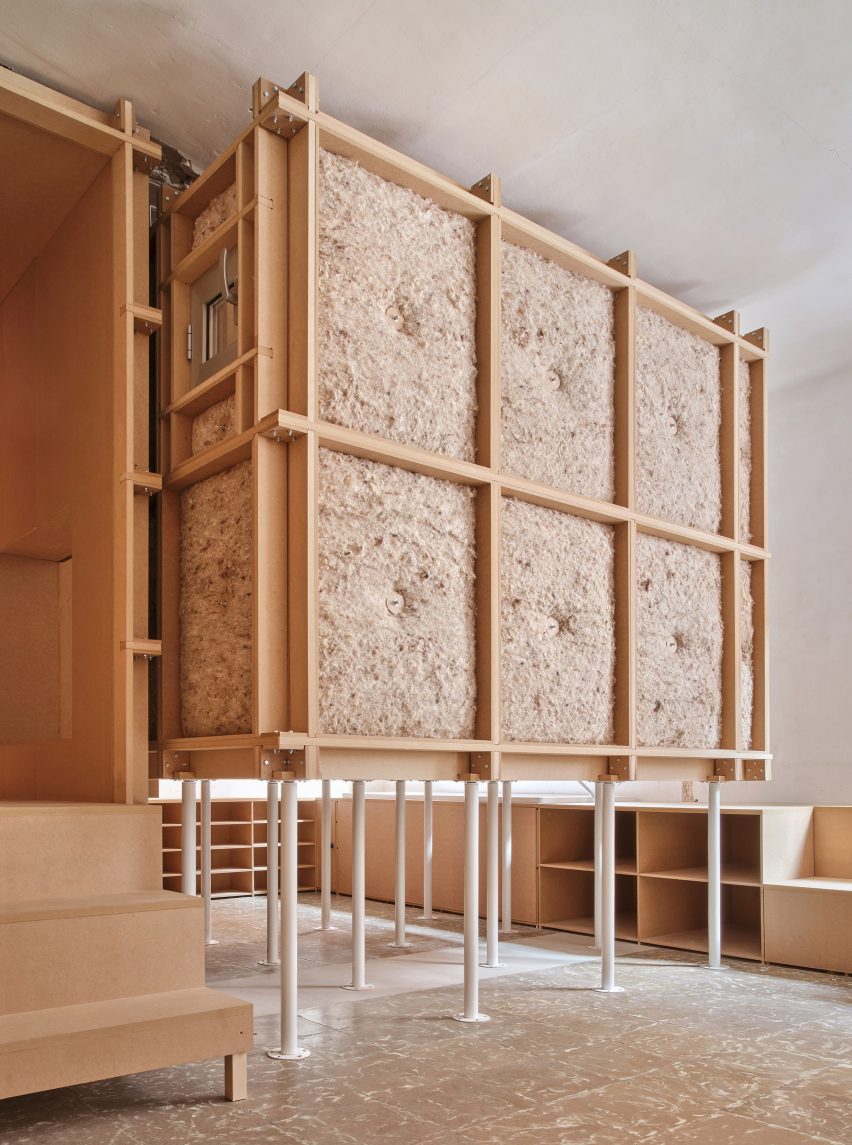
“This causes the heat emitted by us, our pets or our appliances to have to go through more walls to reach the outside,” principal architects Mireia Luzárraga and Alejandro Muiño told Dezeen.
“If we place the spaces that need more heat – for example, the room where we sleep – in the centre of the Matryoshka [a Russian doll] we realise that we need to heat it less because the configuration of the house itself helps to maintain the temperature.”
“The result is a kind of labyrinth that multiplies perspectives,” explained the architects, who designed the project for a single client.
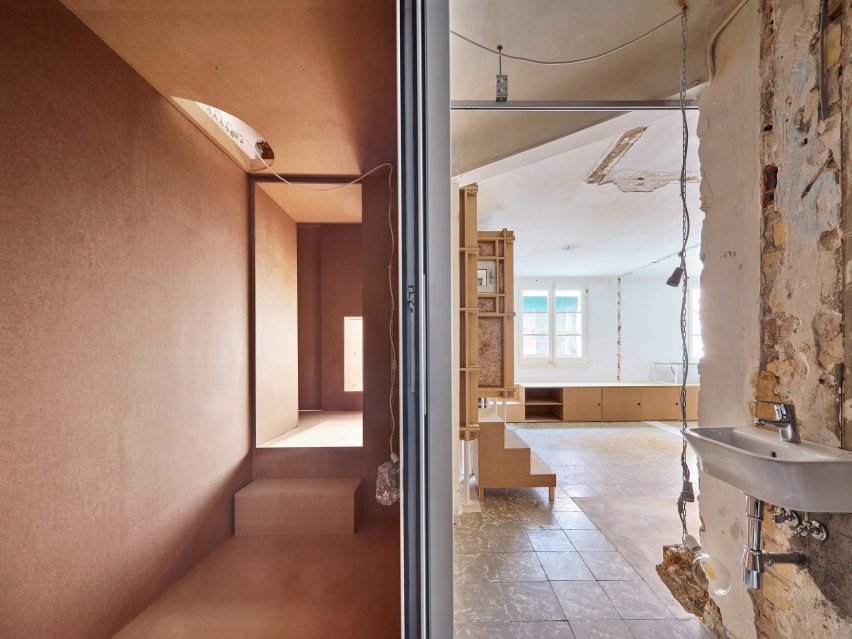
Recycled table legs were used to elevate these constructed rooms to allow the free passage of water pipes and electrical fittings without having to create wall grooves, reducing the overall cost.
For example, the raised central bedroom is clad in gridded frames of medium-density fibreboard (MDF) that are enveloped by slabs of local sheep’s wool – utilitarian and inexpensive materials that feature throughout the interior.
“Despite being a small apartment, it is very complex to ensure that you never get bored of the space,” said Luzárraga and Muiño.
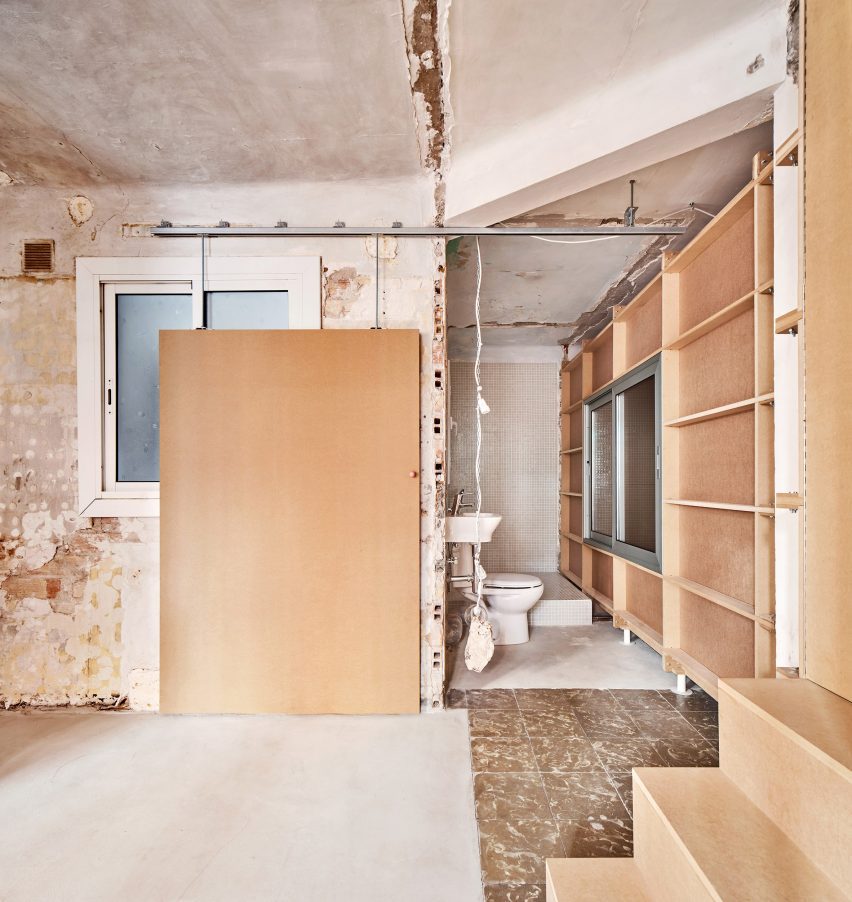
After demolishing the apartment’s existing internal layout, Takk chose not to apply costly and carbon-intensive coatings to the floors and walls.
Rather, the architects scrubbed the space clean and left traces of the previous partitions and dismantled light fixtures visible, giving the apartment a raw appearance and maintaining a reminder of the original floor plan.
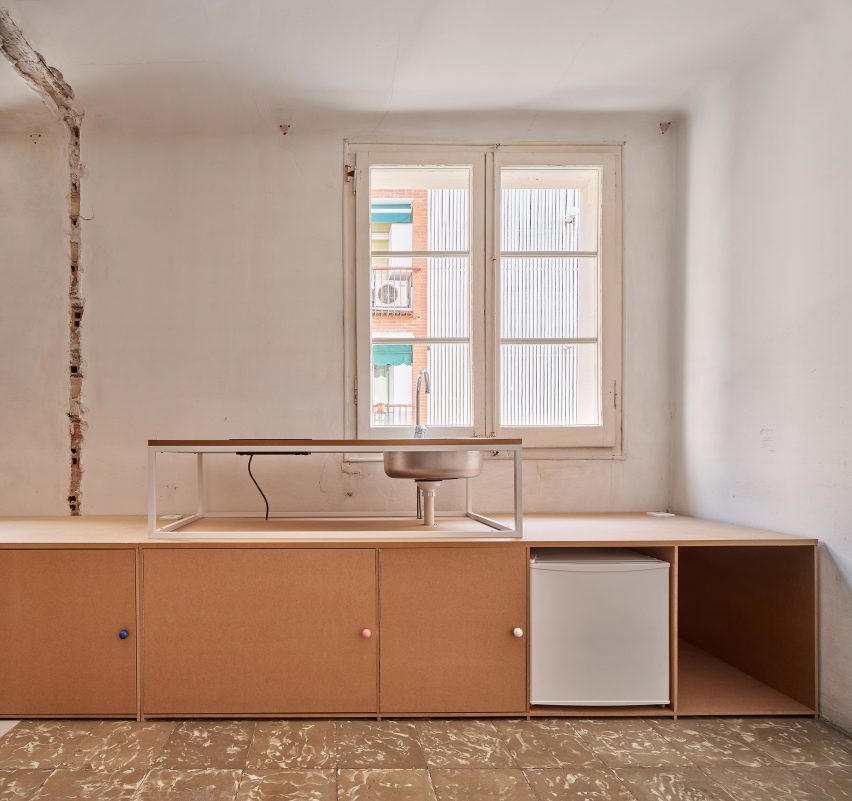
The kitchen is located in the most open part of 10K House, which includes timber geometric cabinetry and an exposed metallic sink.
According to the architects, the open kitchen intends to act as a facility “without associated gender” and address stereotypes typically attached to housework.
“Traditionally, the kitchen has been understood as a space to be used mainly by women, whether they own the house or do domestic work,” reflected Luzárraga and Muiño.
“This has meant that [historically] this space has been relegated to secondary areas of the house, poorly lit and poorly ventilated, especially in small homes.”
“One way to combat this is by placing the kitchen in better and open spaces, so that everyone, regardless of their gender, is challenged to take charge of this type of task,” they added.
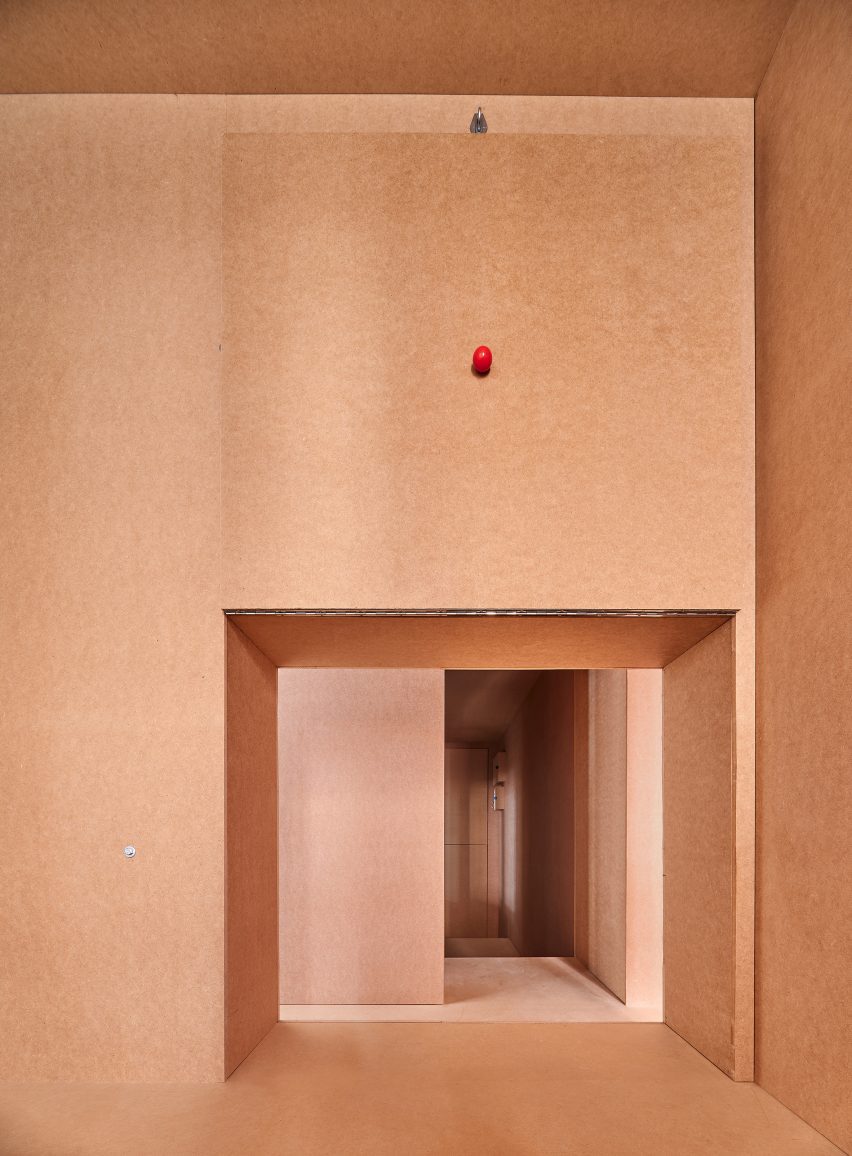
The dwelling was constructed using CNC-milled components that were cut prior to arriving on-site and assembled using standard screws.
Takk chose this method to encourage DIY when building a home, and armed the client with a small instruction manual that allowed them to assemble aspects of the apartment themselves “as if [the apartment] were a piece of furniture”.
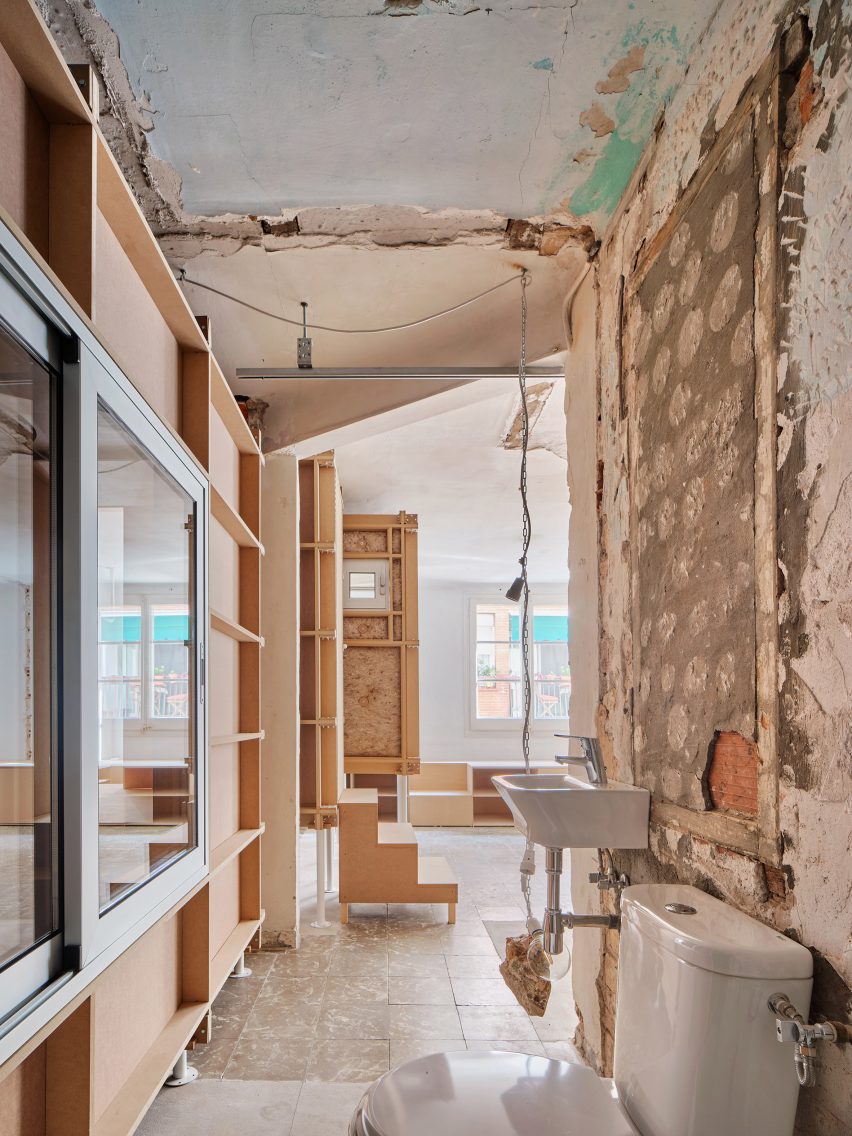
10K House is based on a previous project by the architecture studio called The Day After House, which features similar “unprejudiced” design principles, according to Luzárraga and Muiño.
The architects – who are also a couple – created a winter-themed bedroom for their young daughter by inserting a self-contained igloo-like structure within their home in Barcelona.
The photography is by José Hevia.

